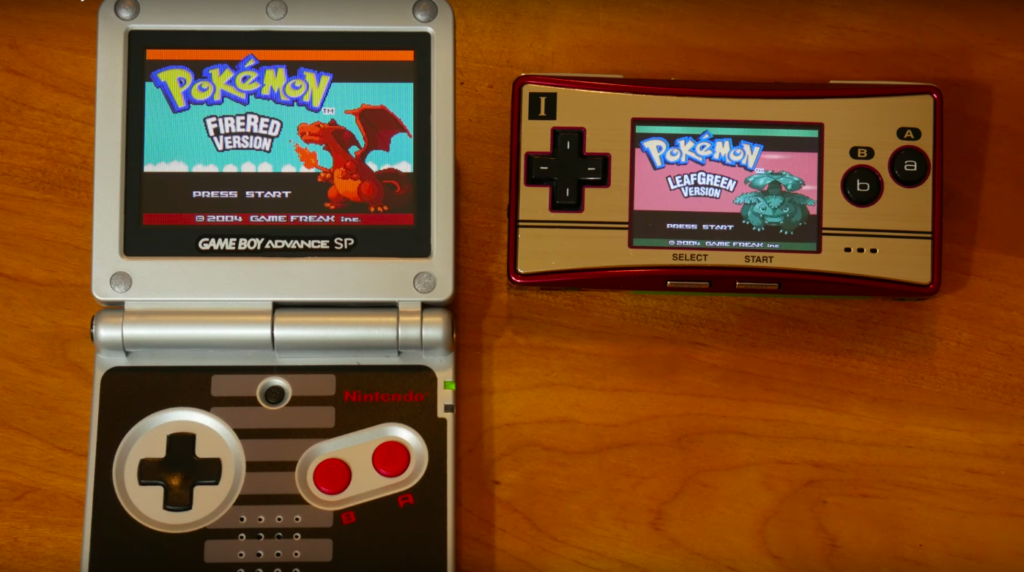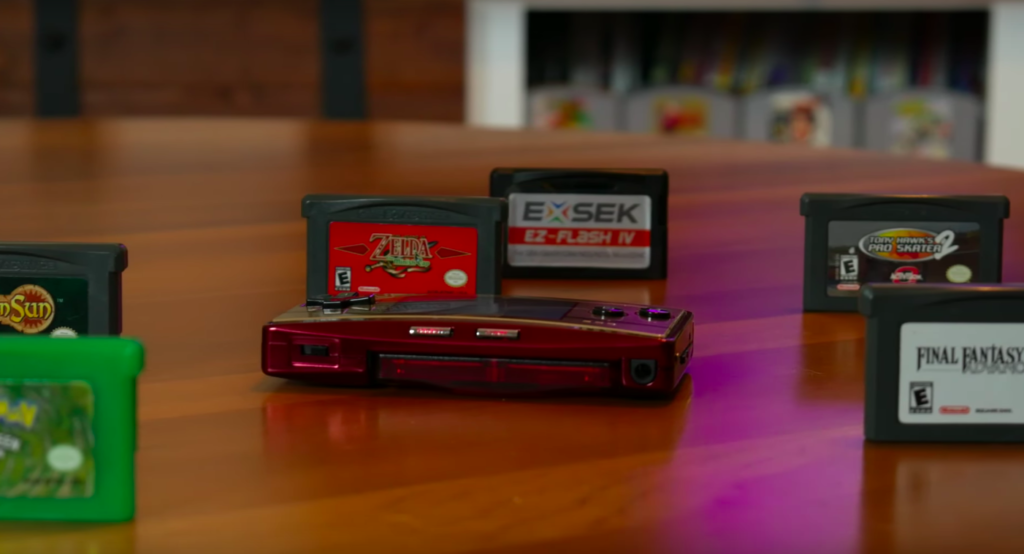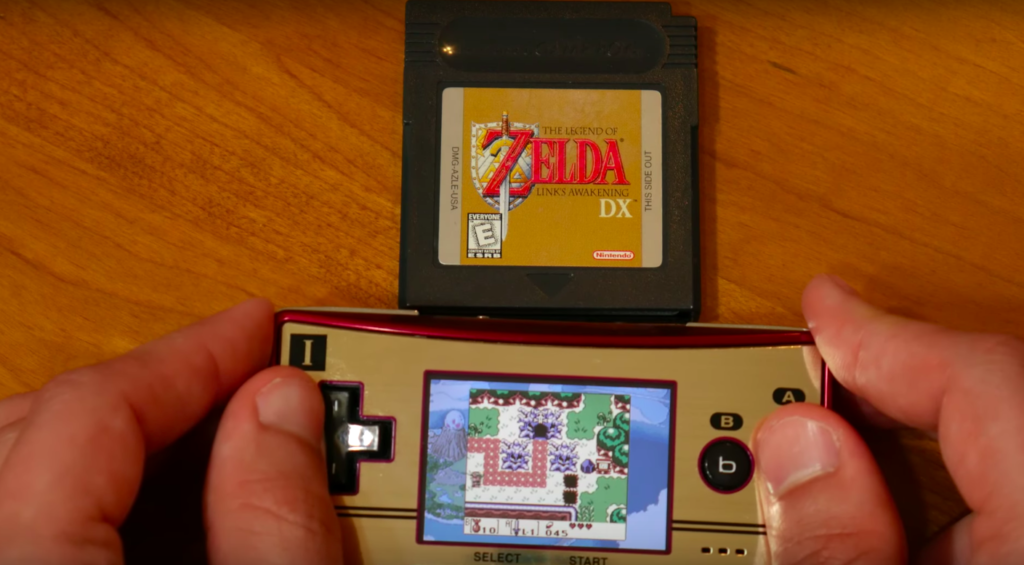Intro:
In 2005, Nintendo released the Game Boy Micro. Unlike the Game Boy Advance and Game Boy Advance SP, the Game Boy Micro lacked backwards compatibility for Game Boy and Game Boy Color Games. As a result, the Game Boy Micro was not very popular. Is it worth it to buy a Game Boy Micro in 2019? What if there was a way to play Game Boy and Game Boy Color games on the Game Boy Micro? Is it worth it then?

Cost:
Let’s first talk about the cost. Due to its rarity and age, the Game Boy Micro is currently available new and used on Amazon for $449 and $125 respectively. That’s pretty expensive considering it’s launch price was only $99. The funny thing is $99 in 2005 is now $128 after adjusting for inflation.
Games on the other hand are relatively cheap. Approximately $10 to $35 for very good condition used games. See the link in the description below:
Overall Size:
The Game Boy Micro’s dimensions are 4″ in width, 2″ in height, and 0.7″ in thickness, and it only weighs 2.8 oz. So if you care for ergonomics, the Game Boy Micro will feel more cramped than the alternatives. That said, I don’t have very large hands, so it feels just fine to me.

Screen:
The screen is also very small at only 2.9 in. In my opinion, though, this screen is even better than the AGS-101 screen on the Game Boy Advance SP. Both of these screens are backlit, which makes colors pop similar to what we’ve grown accustom to on our smart devices, but the pixels per inch or PPI on the Game Boy Micro is higher than the Game Boy Advance SP due to the smaller screen. Everything looks super crisp and sharper on the Game Boy Micro’s smaller screen. As a result, the PPI increased from 99 to 144, creating the illusion that the games “look” higher resolution. The drawback is that text will also be smaller. The font size of Game Boy games has never been that small, though, like you see on games today, so I would say that text is still readable.

Faceplates:
The faceplates are replaceable if you’re into that sort of thing. I suppose it’s a good thing since the screen is exposed at all times unlike the Game Boy Advance SP screen. Multiple variants exist if you’re into that sort of thing. Removing the faceplate is very easy.
D-Pad:
The D-Pad feels mushy to me. Over the past few years, I have gotten used to the Xbox One tactile D-pad and the firm PS4 D-pad. That said, it only took me a few minutes to get used to the Game Boy Micro’s D-pad again. If you want a more tactile d-pad, I would recommend going with the Game Boy Advance SP AGS-101.
Shoulder Buttons:
The shoulder buttons feel great through! They are tactile, and you can hear them when you click them. My only complaint, though, is that you have to press the shoulder buttons near the center of the unit. This is opposite for how the original Game Boy Advance shoulder buttons are pressed. Those are activated when pressing near the sides of the unit. Due to its small size, the Game Boy Advance Micro also isn’t as ergonomic when using the shoulder buttons than the larger Game Boy Advances.
Battery:
Like the Game Boy Advance SP, the Game Boy Micro includes a built in rechargeable lithium ion battery. The battery lasts five to eight hours depending on the screen brightness.
Headphone Jack:
I’m happy to say that the Game Boy Micro DOES include a headphone jack. Apple wasn’t the first company to get rid of it and then try to get you to buy their adapter. Nintendo got rid of the headphone jack on the Game Boy Advance SP and sold a proprietary adapter. Following the outrage, Nintendo reintroduced the headphone jack on the Game Boy Micro despite it’s size reduction, and then Nintendo included it on every handheld console since. So yes, it’s ridiculous that I even have to talk about the fact that the Game Boy Micro includes a headphone jack, but yes, the Game Boy Micro includes a headphone jack. Yay! That brings me to the one thing that Nintendo didn’t include in this version, compatibility with all Game Boy games.

Backwards Compatibility:
Regrettably, the Game Boy Micro is not compatible with Game Boy and Game Boy Color games. There currently exists only one workaround.
Goomba Color is a GBC emulator for the Game Boy Micro and Nintendo DS, which will require you to purchase a flashcart. It won’t play your physical cartridges through. Maybe a future update to Goomba Color will allow hot swapping between the Game Boy Advance flash cart (which boots the emulator), and the physical copy of the Game Boy or Game Boy Color game that you want to play, but that may be wishful thinking for a 14 year old handheld. Let me know in the comments below If you’d be interested in seeing a tutorial for loading Game Boy Color roms onto the Game Boy Micro using Goomba Color.

Conclusion
In conclusion, if you want the best screen quality for GBA games, you want the highest pixels per inch or PPI, and you want a headphone jack when playing your GBA games, then the Game Boy Micro is for you.
Just remember, it is a little more expensive, it is a little less ergonomic, it has a mushy D-pad, and it lacks compatibility with physical GB and GBC cartridges.
